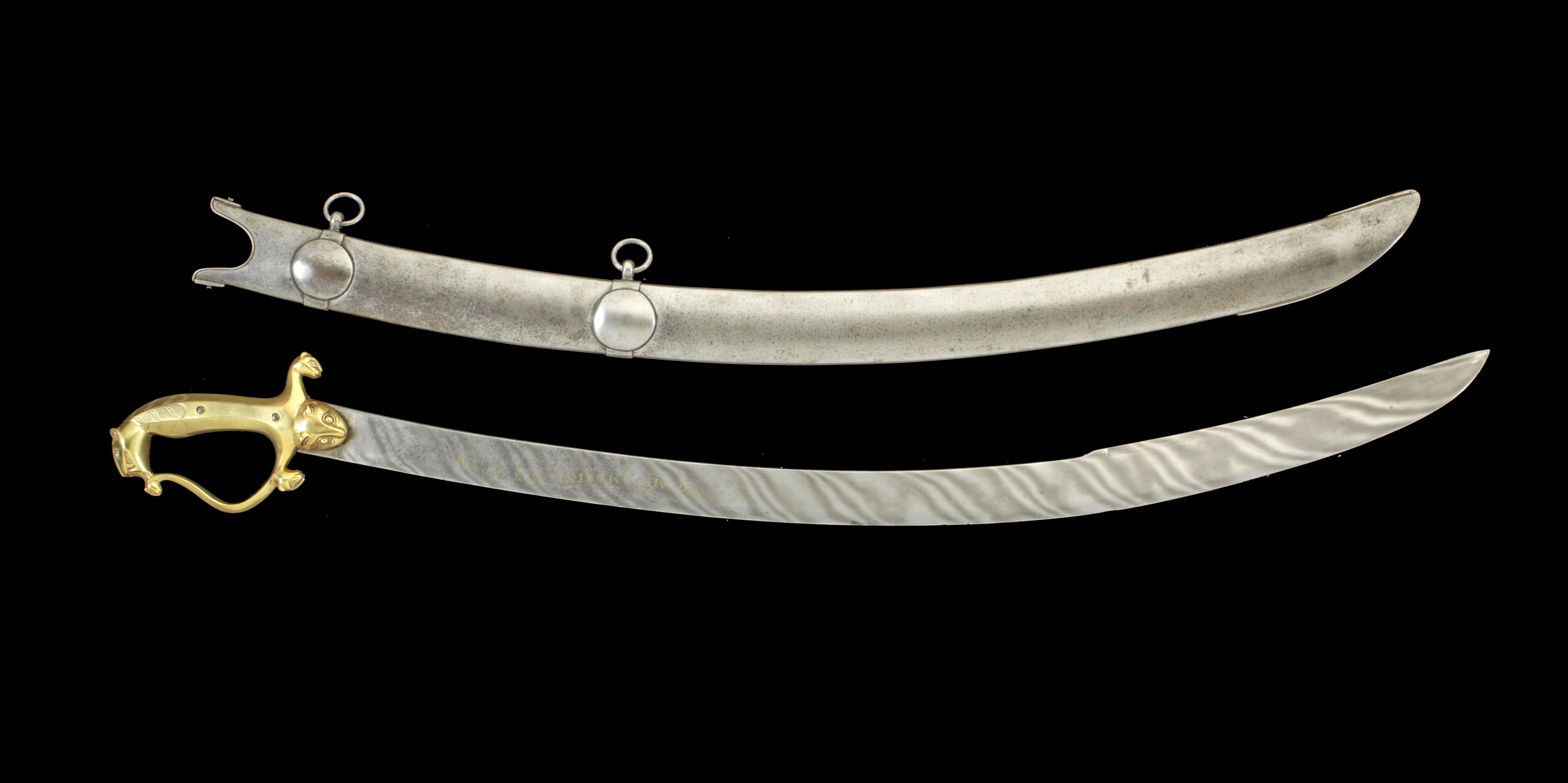In an interview to Blouin Artinfo before the auction, Claire Penhallurick, head of the Indian and Islamic Department at Bonhams, said that there are very few Tipu artifacts in free circulation but a handful appear at auctions every year. According to Penhallurick the Tiger of Mysore generates interest not only in India and the United Kingdom and his belongings find buyers around the world.
The highest sale from Bonhams Tuesday auction was that of a gem-set sword with a tiger head pommel that was estimated to go for not more than £80,000 (Rs 75 lakh) but was sold for £2,154,500 (Rs 20.42 crore).

An important rare gem-set Sword with tiger's head pommel from the royal regalia of Tipu Sultan, Seringapatam, (c. 1787-93).

A rare quilted Helmet with gold koftgari steel nasal bar, Mysore, late 18th century.

A 17-bore two shot superimposed-load silver-mounted flintlock Sporting Gun from the personal armoury of Tipu Sultan, made by Asad Khan-e Muhammad, Seringapatam, and dated 1222 (1793-94 AD).

A rare sword with bubri patterned watered blade from the palace armoury of Tipu Sultan, Seringapatam, (c. 1782-99).

A fine embroidered Quiver and Arm Guards, related Belt and seven decorated Arrows, Mysore, late 18th century.










